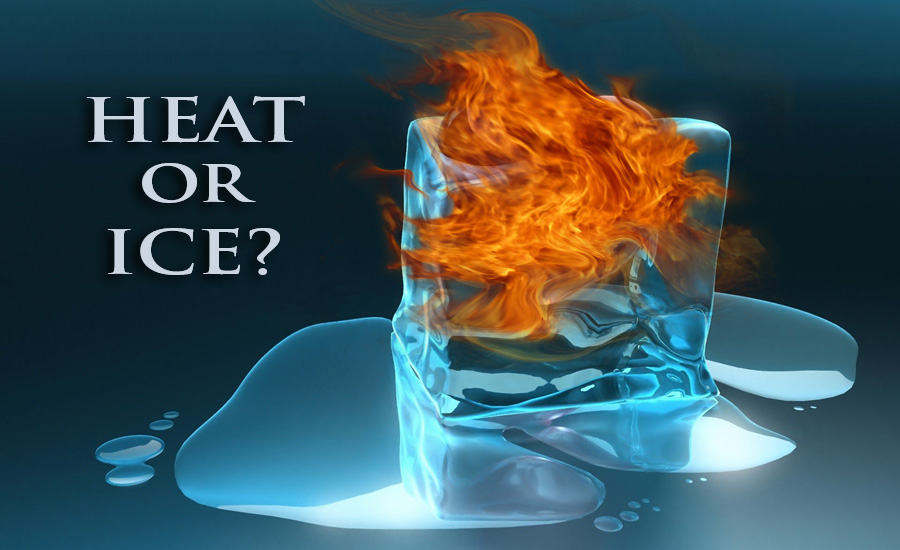
As Chiropractors we daily get asked ‘shall I use heat or ice’ on my injury? It seems to be a longstanding debate on which therapy is the most beneficial, hot or cold, ice or heat.
To decipher the ongoing confusion and apparent mystery in relation to ‘hot or cold’, we have put together this guide for you.
Heat Therapy
When heat is applied to the skin, it causes the local blood vessels to dilate, bringing more blood supply to the area. The resulting benefit is an increased supply of oxygen and nutrient to the tissues, which may speed the healing process. Heat also has a soothing effect and can help to alleviate some pain and stiffness.
It is however important not to use heat on a new injury where there is bruising or swelling (inflammation) as the increased circulation in the area could aggrevate the injury. Herein lies the problem… How do you know if something is inflamed?
Common signs of musculo-skeletal inflammation includes:
- Pain – The body’s way of telling you that something is wrong.
- Heat – Increased blood flow to the area due to an injury will leave it warm to the touch.
- Redness – Increased blood flow will make the area look ‘flushed’.
- Swelling – Fluid build-up around an injury due to increased circulation.
- Loss of function – Pain and muscle spasm is often the body’s way of protecting an injured area. Swelling within a joint can also cause local stiffness.
So when is heat safe to use?
- Aching pains from chronic (long-term) conditions such as Fibromyalgia or other chronic pain conditions.
- Aching muscles from over-exersion.
- Cramping pains such as period pain.
How can I apply heat to an area of my body?
There are many ways to do this, and more or less all of them will do the trick as long as you do not end up burning yourself. You do not need to go to extremes to achieve the desired results. A gentle heat will do the trick. Remember to check your skin at regular intervals to avoid burns.
A few options available to all of us are electric heating pads/ blankets, the traditional hot water bottle, a microwave heat pack, or simply a nice long bath or shower.
Cold Therapy / Cryotherapy
Ice as a therapy is mainly aimed at controlling pain in the acute phase of an injury, but can also help to reduce swelling and inflammation of an injury. By applying ice over an injury, the local metabolic activity is slowed down, blood vessels contact which limits inflammation and reduce pain. It is important to point out that ice as a therapy is mostly beneficial in acute/new injuries.
Benefits of using ice on a new injury:
- Reduced bleeding into tissues.
- Prevent or reduce inflammation (swelling).
- Reduced pain by numbing the area.
- Reduce muscle pain.
- A safe home pain management.
- Any acute (new) musculo-skeletal injury.
- In a acute ‘flare-up’ of a pre-existing injury.
- As a safe analgesic to superficial pain.
How do I apply ice to an injury?
The first rule of thumb is ‘when it’s numb, you are done’! For acute injuries there are recommendations to apply cold to an injury for approximately 15 minutes several times per day. Do not keep the ice pack on for longer that 20 minutes as the risk of ‘freezer-burns’ increase and there is no additional symptomatic benefits. There are many versions of ‘ice packs’ to be bought from the local chemist, however you can easily make your own at home. Simply take something from your freezer i.e. (frozen peas, ice block etc.) and wrap it into a cloth. It is important that your skin is not in direct contact with the ice as it will result in a freezer-burn very quickly.
Weather you choose to use hot or cold, please remember that neither will ‘fix’ your problem. Both heat and cold are merely ways of managing symptoms displayed by the body in relation to a dysfunction or injury. If your symptoms persists for more than a few days or are getting worse, do not delay in seeking professional help.
If you would like to talk to one of our Chiropractors or make an appointment, please click Here.
